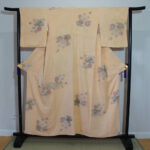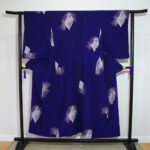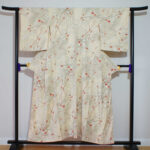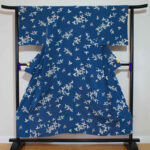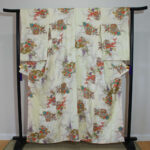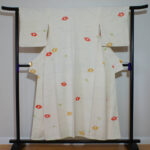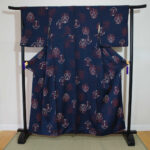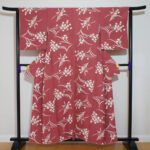Pattern
Kimono patterns vary widely, featuring traditional motifs, landscapes, plants, and animals. They are chosen according to the season or occasion. Common designs include flowers, birds, waves, cherry blossoms, pine trees, and peonies, each offering a unique charm through arrangement and coloration.
There is a wide variety of patterns and dyeing techniques in kimono design. Traditional Japanese kimono reflect the culture and customs of different regions and eras through their designs, patterns, and dyeing methods. Here are some representative patterns and dyeing techniques:
– Shibori involves tightly binding fabric with strings before dyeing, creating unique patterns. Representative patterns include “Yokocho” and “Nagare” (flowing water).
– Yuzen involves hand-painting intricate designs and motifs onto fabric before dyeing. Famous Yuzen designers often depict seasonal flowers, landscapes, and traditional patterns.
-Kyoyuzen- A type of Yuzen dyeing developed in Kyoto, known for its advanced techniques and beautiful color combinations. It is used primarily for high-end kimono worn on formal occasions.
Hand Painting
– This technique involves painting patterns directly onto the fabric using brushes or pigments before dyeing. It’s a traditional method, with each piece being handcrafted.
– Edo Komon refers to simple, subdued patterns widely worn by commoners during the Edo period. Despite their understated appearance, they were suitable for formal occasions.
– Nishijin-ori is a high-quality woven fabric produced in the Nishijin district of Kyoto, often used for kimono and obi. It features geometric patterns and elegant motifs, suitable for formal wear.
– Koshi-ori features tightly packed, delicate patterns that give a refined and elegant impression. The small motifs create rich textures and visual interest.
– Ichimatsu pattern consists of small, square grid patterns, a traditional Japanese motif believed to bring good luck. It’s commonly used in various settings.
These are just some examples of kimono patterns and dyeing techniques, showcasing the richness and diversity of kimono culture. The choice of design and dyeing method often depends on the season and occasion, reflecting the vibrant traditions and heritage of Japan.
全8件を表示
